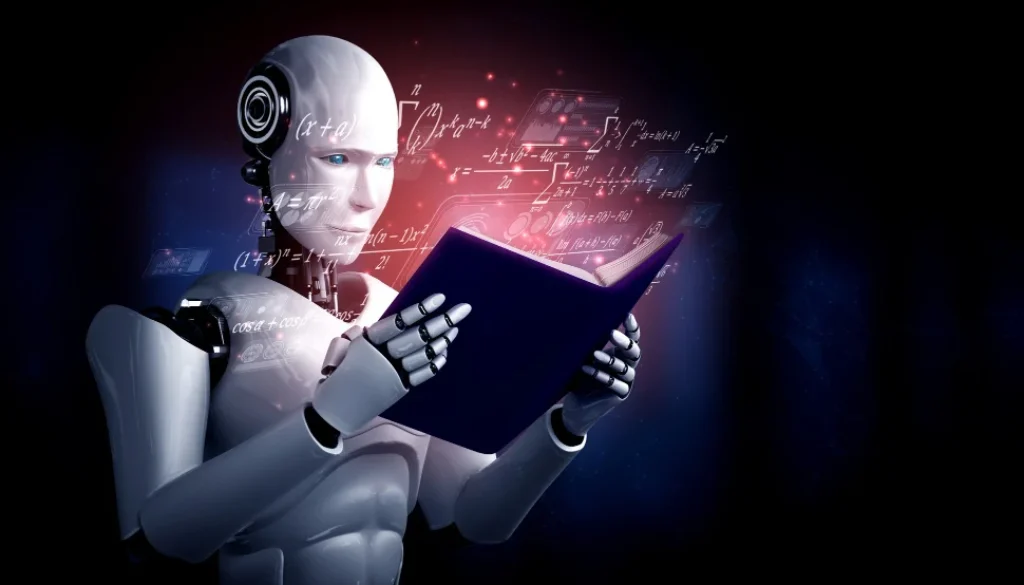Discover ‘The Return of Artificial Intelligence’: Reading Answers
AI has undergone a tumultuous voyage from its inception, marked by moments of optimism and serious setbacks. The present article explores the findings and solutions illuminated in “The Return of Artificial Intelligence Reading Answers,” providing an understanding of essential aspects and advancements within AI.
Introduction to AI’s Journey
In 1956, a conference of researchers led by Marvin Minsky and John McCarthy coined the term AI. Since then, this technology has brought together diverse fields such as cybernetics, operations research, and computer science. Although artificial intelligence had a promising beginning, it encountered several obstacles and changes in perspective throughout the years.
The Rise and Fall of AI
Initial Optimism and Setbacks
During the early 1980s, AI research was marked by an unwarranted sense of hopefulness among researchers who were convinced that major advances in the technology- such as medical diagnosis applications and speech recognition software – would soon be achieved. Nevertheless, towards the end of this decade many scientists began to steer clear from using “AI” due to a better appreciation for just how complex these problems had become; consequently resulting in a pullback within this field.
Misconceptions and Reassessment
Paradoxically, the triumph of AI had an unintended consequence. Innovations like speech recognition and language translation previously deemed as AI lost their classification once they became economically feasible. This phenomenon fostered a viewpoint that any functional technology cannot be considered as true AI, causing the term to predominantly entail hypothetical research distant from practical application.

The Return of AI
Renewed Interest and Applications
Government-supported companies like HNC Software are spearheading the transformation of AI, creating robust systems that can identify hidden vehicles and extract sound from distracting environments. This groundbreaking progress is reinvigorating interest in AI while highlighting its promising military implications.
Addressing Information Overload
The growing issue of information overload caused by the surge in emails and web pages is contributing to the rise of AI. As a result, there’s a rise in AI solutions being created that can filter through and organize this enormous amount of data. These developments are creating new opportunities for emerging AI companies looking to tackle these challenges.
The Future of AI
Overcoming Past Limitations
AI appears to have a promising future despite previous obstacles. While the positive outlook of the 1960s, exemplified by HAL 9000 in “2001: A Space Odyssey,” may no longer serve as an AI standard, practical applications and remarkable abilities—such as playing chess or transcribing speech—are now being used for assessing its efficacy.
Investor Interest and Market Demand
Firms that utilize innovative technologies are becoming sought after by investors, prompting a shift in investment priorities. Such prioritization is anticipated to further fuel advancements in AI technology as it endeavors to tackle traditional problems and open up new prospects for growth within the field.

Key Insights from the Reading Passage
Military Impact and Research Areas
The potential military implications of AI stem from its capacity to execute tasks that are difficult for humans, like detecting vehicles concealed with camouflage. Moreover, AI blends multiple domains of study by adopting a cohesive approach towards solving intricate issues.
Common Topics of Conversation
The resurgence of AI in pop culture and its practical applications has brought the topic back to public discussions. This renewed interest is prompting further research and fostering debates in the field.
Opportunities and Challenges
AI’s previous struggles with unrealistic demands and technical constraints have influenced its present course. Nevertheless, continual exploration and progress in the field position AI to surmount these hurdles and fulfill its potential of transforming diverse sectors.
Conclusion
From its origin to present-day progress, the development of AI is a tribute to those in the field who have shown resilience and creativity throughout. Despite experiencing skepticism and setbacks along the way, AI has persevered by providing innovative solutions for intricate challenges while redefining our comprehension of smart systems. As advancements within AI continue to emerge, there are exciting possibilities that it can revolutionize various industries and enhance individuals’ lives – resulting in “The Return of Artificial Intelligence Reading Answer” being a captivating story full of potential for change.
Appreciating the progress made in AI and anticipating its future developments can be achieved through grasping both the historical circumstances and present innovations of this field.



